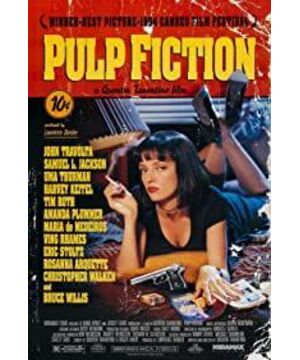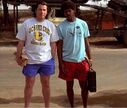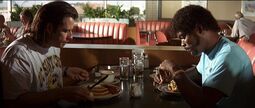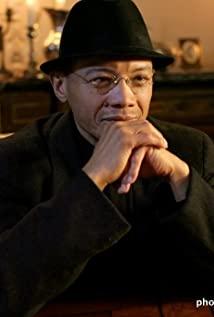1994 can be regarded as a golden year in film history. In that year, "Forrest Gump", "Shawshank's Redemption", "Pulp Fiction", "A Storm Is Coming", "Evil and Western Drugs", "Born Murderer" "" and many other films that are enough to spread film history have emerged at the same time. It can be said that any one of them can win the statuette and is much better than the current award-winning film. Regardless of the content of the film or its pioneering narrative structure, there are still few films that can surpass them 20 years later. Their status in film history can also be seen from the current most authoritative IMDB film rankings. two..
"Shawshank's Redemption" ranks first on the list with its profound spiritual connotations, and is known as the "Uncrowned King". Not only in the eyes of professional film critics, even ordinary audiences can feel the film's spiritual shock to them. The content is always easy to understand, and "Pulp Fiction", which has done an extremely pioneering exploration in the form and structure of the film, is not so lucky.
In 1919, Griffith filmed his work after the great success of "The Birth of a Nation"-the earliest non-linear narrative film "The Party Favors Differences". However, this film brought him infinite desolation and debt. In the tiring old age, the audience at that time simply couldn't understand the four unrelated ones jumping around like this.
Decades later, people gradually accepted this non-linear narrative mode in their thinking. Quentin's "Pulp Fiction" turned out in 1994. This kind of film exploring the structure of non-linear narrative has gradually gained recognition and praise. However, ordinary audiences may still find it incomprehensible. Isn't this movie just a few words in the movie from beginning to end, what's so good about it? He has been extolled to the sky. Does he have such a high status? Does he deserve such a high evaluation?
It is worth mentioning here that the general audience’s acceptance of the classics is generally divided into three types:
first, blindly follow the trend, not knowingly after reading it, everyone said yes, although I did not understand it still scored high;
second He started thinking, "I don't think he is so good, why is the evaluation so high?" Then I used my own understanding as the radius, and even if the radius was exceeded, I would still give him a negative score, and I didn't even see it. Understand what's good?
Although the third type is the same as the second type, they didn't understand it at first, but they are willing to carry on thinking, understand the reasons why they become classics, and begin to break through their own understanding radius and expand their own cognition.
Human beings have an instinct to classify things. If a thing exceeds their current level of cognition, they will always be anxious to give him a personality label. Generally speaking, it is blind worship or desperately degrading, but these two are essentially It's the same, it's all a kind of fear of things that you can't understand.
Confucius said, "No need, no need, no solidity, no me." One should not be judged lightly, especially before one can understand it objectively and correctly. Just as Bai Ice admonished Vasily in "Three Body": "Weakness and ignorance are not obstacles to survival, but arrogance is."
People should always have a sense of awe.
The classics will not hinder his greatness because of personal understanding or liking or not. As far as I am concerned, when watching "Guling Street Youth Murders" and "Eight and a Half", the right hand can't stop the fast forward button. Press up, the left hand can't stop it at all! But in fact, this does not affect their excellence. Sometimes it is a matter of personal preference that the classics do not enter, but more often it is because of insufficient knowledge or experience and the time has not come, rather than the classics themselves.
We have talked about "Citizen Kane" before. As the pioneering work of modern film, it is regarded as the standard textbook for explaining film by many film schools. Edited to the design of Kane's complex image. As for "Pulp Fiction", it is also worthy of being treated in this way, and we can also regard it as a standard model of the film's narrative structure-like Citizen Kane, for a detailed analysis.
The following is mainly to understand this movie from a technical point of view.
1. Collage
If you have seen Quentin’s other film "Kill Bill", you may be impressed by the diverse style of this film. In this movie, Quentin first divides it into ten chapters according to a linear structure, then rearranges them in a non-linear way, and then blends different genre styles into each chapter, such as Hong Kong in the 1960s and 1970s. Kung fu movies, Italian gangster movies, western movies, Japanese samurai movies and Japanese cartoons. In this way, the story is still that compact to an extremely simple story, but what the audience feels when they appreciate it is the joy of change.
This is actually a collage of film styles (also similar to "Born Murderer" and "Lola Run", see "Counterpoint Polyphony").
As for "Pulp Fiction", it is a collage of the film narrative sequence. Let us first analyze the narrative context of
"Pulp Fiction" according to the normal linear development sequence: "Pulp Fiction" tells a total of three related stories:
(Story 1) The dirty:
(1) Vincent and Jules went to a hotel to collect dirty, the two chatted all the way, got the stolen money, shot the dirty hider;
(2) was shot accidentally and found unscathed, Jules thought it was "God" track ";
(3) return on the road chat, Jules because" miracles "decided to pack it manslaughter to live successfully dealt trouble;
(4) two small fast-food restaurant robbery ruffian;
(5) Jules as" miracle "began to reflect , As a rescuer to solve the trouble;
(6) The two went back to have a business relationship and met the boss and Butch making a deal.
(7) Talk about Vincent’s new mission-accompany the old lady Mia out to play;
(Story 2) Vincent and the old lady Mia’s dinner
(8) Vincent went to the drug dealer’s home to buy drugs
(9) Vincent and Mia’s dinner
(10) Mia overdose , Vincent was rescued successfully and bid farewell.
(Story three) Butch's gold watch
(11) Butch dreams and recalls the origin of the gold watch
(12) Butch flees with tricks
(13) Butch goes home to pick up the gold watch, kills Vincent, and stuns the boss on the way home
(14) Butch and the boss strayed into the black shop, boss The
boss was rescued by Butch (15). The two and
Quentin broke up the three stories, collaged these 15 sequences, and recombined them:
(4) Two little rascals robbed the fast food restaurant;
(1) ) Vincent and Jules went to a hotel to get dirty. They chatted all the way, got the stolen money, shot and killed the dirty man;
(6) The two went back for business and met the boss and Butch making a deal.
(7) Discuss Vincent's new mission-accompany the old lady Mia out to play;
(8) Vincent goes to the drug dealer to buy drugs
(9) Vincent and Mia dinner
(10) Mia overdose, Vincent succeeded in rescue, bid farewell.
(11) Butch dreams and recalls the origin of the gold watch
(12) Butch flees with tricks
(13) Butch goes home to pick up the gold watch, kills Vincent, and stuns the boss on the way home
(14) Butch and the boss strayed into the black shop, boss The
boss was rescued by Butch (15), and the two reconciled.
(2) They were shot accidentally and found unscathed. Jules thought it was a “miracle”;
(3) Gossiping on the way back, Jules decided to wash his hands because of the “miracle” , Kill by manslaughter, deal with trouble;
(4) Two little ruffians in the fast-food restaurant robbed;
(5) Jules began to reflect because of the "miracle", and solve the trouble as a savior;
Now the sequence of the story becomes:
(4)(1)(6)(7)(8)(9)(10)(11)(12)(13)(14)(15)(2)(3) (4) (5)
This is the collage of the film's narrative sequence.
Here we have accidentally touched on a fundamental question in narratology, that is, what is the smallest unit of division of an event in a narrative work? Roland Barthes believes that "the functional coverage of narrative works requires a relay organization, and its basic unit can only be a small group function. We call this small group function "sequence". Two points to note are:
a. Sequence has Long or short, such as a war, a five-year plan, a game of chess, and walking the dog can all be counted as a sequence;
b. Sequences can be freely combined, which is full of various possibilities
. The 15 points we summarized above are " The sequence of "Pulp Fiction". Quentin combined these 15 sequences freely to produce various wonderful effects. For
example, in the first story, the audience would be surprised when Vincent was shot. Unexpectedly, in the third story, Vincent was resurrected and secretly changed clothes and started talking with Jules; for
example, I thought that Jules and Vincent had already ended the murder, and they both had already dealt with the boss. Unexpectedly. In the second half of the film, a person will suddenly jump out of the toilet and shoot
at them; for example, the beginning and the end of the film are actually connected to each other to form a ring structure, which is damn wonderful!
Also if you read carefully, you will find the first There are a total of 16 recombined sequences in the second group, one more than the first group. This involves the following topics.
Second, the circular complementary structure
actually has a prototype of the script of "Pulp Fiction" as early as 1990. In 1992, Quentin reviewed the script again after filming "Falling Water Dog". "I realized one thing, why can novelists make characters appear or disappear as the narrative needs, but the director never does it? "This idea has achieved the most talked-about feature of Pulp Fiction, that is, the ring-shaped complementary structure.
As mentioned earlier, the second characteristic of "sequence" is that it can be combined freely, which produces all kinds of wonderful effects. One of them is this cyclic complementary structure.
Let's put on the linear development sequence
story one first: (1) (2) (3) (4) (5) (6) (7)
story two: (8) (9) (10)
story three: (11) (12) (13) (14) (15)
Then the sequence after reorganization:
Story One Group A: (4)
Story One Group B: (1) (6) (7)
Story Two: (8) (9) (10)
Story Three: (6) (11) (12) (13) (14) (15)
Story One Group C: (2) (3) (4) (5)
This looks much clearer, namely The first story is divided into three sections to be told separately, and the third story is also divided into two groups, sequence (6): Vincent and Jules seeing Butch and the boss deal can be regarded as the prologue of the third "gold watch". So I let sequence (6) appear twice. Godard said: "I admit that a movie has four parts: beginning, development, climax, and ending, but it doesn't always have to be described in this way."
"Pulp Fiction" fulfilled this perfectly.
Story 1 is actually very long. A lot of things happened to Jules and Vincent this time: they went to the hotel and shot the dirty people; someone hid in the toilet, shot out but they were unscathed and showed signs of miracles. ;
On the way back, he killed himself by accident and called for a helper to deal with the trouble; the fast food restaurant was robbed; went back to meet Butch, talked about Vincent’s new mission, and went out to play with Mia.
The beginning of the story, that is, the (4) sequence is actually the part that is about to end in (Story 1). Quentin put it in the beginning of the movie, and then edits (1) (6) (7) these three The sequence becomes the main body of the story. Quentin still kept a hand. He changed Jules and Vincent's clothes, and changed his suit into shorts and short sleeves. This quietly laid the groundwork for the following narrative, so that the follow-up part of story one would not be too abrupt.
In the C group of story 1, they dealt with the trouble and came to the fast food restaurant and encountered sequence (4), but the sequence at the beginning of the movie (4) was the two little hooligans, and the sequence at the end of the movie (4) was Jules and Vincent. This achieves a ring-shaped complementary structure.
The repeated sequence (4) is composed of two different narrative subjects, which is actually a multi-perspective three-dimensional narrative.
3. Multi-perspective three-dimensional narrative
In "Citizen Kane", we have already talked about the narrative technique of multi-perspective . Let me mention it again. For example, Ning Hao's "Crazy Stone", the beginning of the film, a crash from three angles, described from the perspective of three groups of people; Kubrick's "The Killing", George prepared after hearing the broadcast Shooting, rewinding four times, describing the actions on the cross section of the time from the perspective of four people. The real world is synchronic, and the story can only be told in a traditional linear way. This method breaks through This obstacle to storytelling, time freezes, instantaneously presents, enters the level of spatial narrative, expands and prolongs the time capacity.
In "Rashomon", it was actually just a very simple incident, but five different opinions were spoken from the five populations.
These are all multi-perspective three-dimensional narratives. In academic terms, this kind of storytelling method is the internal focus perspective. The internal focus perspective is divided into "indefinite internal focus" and "multiple internal focus". The examples we have just given include "Rashomon" and "Crazy Stone" is all about "multiple internal focus", what people say is: repeating the same thing from multiple angles.
But "Pulp Fiction" belongs to the "indefinite focus", that is, it uses the perspective of several characters to present different events, and it must be limited to a single character within a certain range. For example: in sequence (1) and (2), after Jules finished reading the Bible and killed someone, the interval was interrupted to the end of the film, and someone was found hiding in the toilet. The angle of view in the first half is Jules, and in the second half, the person hiding in the toilet.
Look at the multi-perspective narrative of sequence (4) again. It is divided into two narratives. The sequence of the opening (4) The narrative subject is two punks, and at the end the narrative subject becomes Jules.
The beauty of Quentin's use of this narrative technique is that he is not only satisfied with multiple perspectives, but also the changes in the ideological consciousness of the characters before and after brought by multiple perspectives. For example, in the first story, Jules is a gang killer in the first story, but at the end of the film, he began to reflect on himself because of the "miracles", appeared as a savior to solve the trouble, and tried his best to push the two gangsters to the right path.
Looking back at Quentin’s "Pulp Fiction" again, you will find that Vincent appears in all three stories. In the first story, Jules is the main point of view, and Vincent is the supporting role. In the second story, Vincent has become the absolute protagonist, and the boss His wife Mia ate dinner and danced together, and in the third story, Vincent was a dead end, and as soon as he showed up, he was shot and killed by the absolute protagonist Butch. This is the film's "indefinite internal focus" narrative, which uses the perspectives of several characters to present different events.
Multi-perspective three-dimensional narration is like looking at a regular hexahedron, such as a chalk box. Viewed from the front, from the side, and from the top, it is different, and when viewed from only one side, the other two sides will be deformed and distorted. So if we want to observe the shape of a chalk box, we will observe it from various perspectives, and even hold it in our hand and check it over and over again. We look at Vincent from the supporting role in the first story, the absolute protagonist in the second story, and the elusive player in the third story.
This technique restores the true face of life to the greatest extent, and even eliminates the protagonist’s halo. Everyone is the protagonist and has his own independent consciousness. A deadly player has his own before being shot and killed. s story.
Four, conversational polyphony
Generally speaking, a multi-perspective three-dimensional narrative will give rise to a kind of "conversational", that is, the collision between various equal ideologies unified under one theme/event.
For example, Sequence (4) The fast food restaurant is robbed. The first half is narrated from the perspective of two little hooligans, and the second half is narrated from the perspective of Jules. Their dialogue arises from the theme of "continue to fall or choose to be good." , And there was a conflict between them.
From the perspective of the overall structure, there are three stories in the film, and the subjects of the three stories are different: in story one, Jules is the subject; in story two, Vincent is the subject; in story three, Butch is the subject. Different consciousnesses of the same value have appeared, and the first condition for dialogue is possessed-multiple subjects. So the second condition, what is the dialogue relationship between them, and how do they point to each other? In fact, it is the same as the mini-dialogue in sequence (4). They explained the topic of "continue to fall or choose to be good" from different directions.
(Story 1) In the story, Jules was so arrogant that he read the Bible while killing, and was shot unscathed afterwards. He lamented the appearance of the "miracle" and determined to wash his hands and not dry his hands. From then on, he was a good man. Vincent, on the other hand, was apathetic and indifferent.
In (Story Two) Vincent chose to continue to fall, and died accidentally from a gunshot.
(Story 3) In order to get back the symbolic gold watch belonging to his family, Butch was willing to take risks, and finally rescued the boss, and finally went away safely with the money.
After analysis, it can be seen that they explained the topic of "continue to fall or choose to be good" from different angles. The three story structures are compared with each other, and there are also confrontations in the dialogue between the characters, such as the debate on miracles between Vincent and Jules.
4. Counterpoint polyphony (non-linear mesh structure)
We have previously created an article on "Counterpoint Polyphony" and talked about its four characteristics:
a. Multi-voices, multi-cues, and more Story
b. The status of voices/clues/story is equal. Any clue or story cannot be simply used as an accompaniment
c. The whole is indivisible, and any one missing can no longer constitute the text itself.
d. In addition to the abstract thematic connection, their superficial plot development should also be connected, mostly due to the fate of the characters and the accidental collision, that is, the vertical development also has horizontal resonance.
"Pulp Fiction" is composed of three stories. Composition, there are multiple clues in each story. For example, in the first story, there are not only dirt, miracles, but also handling of corpses, fast food restaurants are robbed, and the stories are also related to each other. In the first story, Vincent and Jules came back to meet Butch. That was the first time that Butch and Vincent met. Quentin deliberately asked Vincent to go to the bathroom to highlight the two people's reunion in the third story. In the third story In "Gold Watch", Butch went home to pick up the gold watch, ran into Vincent, shot and killed. This is the connection between story one and story three.
Quentin split the whole story into three parts. The three lines are narrated separately, and they are scattered and not chaotic. As mentioned earlier, Vincent appears in all three stories. Quentin uses the character Vincent to connect the three. The story constitutes a complex spider web-like "non-linear web structure", which includes not only the counterpoint between stories, but also the counterpoint between multiple clues within the story, and the pairing between clues between stories. Bit.
Among them, the stories and the clues are independent and equal, no one serves as a foil, and the whole is inseparable, which constitutes the praised "counterpoint polyphony".
5. Structure is content: postmodernity, black humor, and deconstruction.
If high school Chinese is not taught by a physical education teacher, there will be such a common sense of reading comprehension, that is, to analyze a text. We generally start from two aspects— -Structure and content.
The content of "Pulp Fiction" really doesn’t have much new ideas. The only commendable thing seems to be a scene of Vincent and Mia dancing and dancing in a nightclub. The dim background, the bright stage, the bell bottoms worn by Mia, Relaxed Latin music, wonderful twisting dance, with a bit of irony and nostalgic decadence. Quentin easily reviewed the history of American film, music and dance with this scene alone.
Compared with "Shawshank's Redemption", vulgar novels do not seem to have so profound spiritual connotations. As the title suggests, a vulgar gangster style painting is just three stories that are too simple to be simple, and pulp is too simple. The younger brother played with the eldest woman and couldn't move. This section of the bridge was really bad, but Quentin had the ability to turn decay into magic.
This skill is reflected in the subtle design of the structure. It is possible that Quentin did not think so much when collage the film's narrative into this way, just for fun. But when a text goes far enough in narrative, the subtlety of its structure will also reflect on the content, giving the original mediocre content other wonderful meanings.
Quentin's ring-like complementary structure is often seen as a ring of violence. This cyclic structure implies that violence has no beginning and no end, and always exists.
A couple of lovers decided to rob on the spot for no reason. The conversation before the robbery was full of non-directional tropism; Vincent opened the door but was shot to death by Butch. The boss was walking halfway and was suddenly knocked over by Butch. He even took it into a black shop on the side of the road and was brutally exploded with chrysanthemums...
These all imply that violence is unpredictable, and it will attack anyone at any time.
This gave rise to a Quentin-style violent aesthetic, chatting while killing. At the same time, there was a lot of black humor:
Before Jules killed someone, he still argued with others about which hamburger was delicious, and he had to read a paragraph of "Bible"; when his life was at stake, Lance, the drug dealer, had to look for a medical ceremony for reference. People think that the underworld killer wearing black sunglasses would be afraid of a housewife, and he would be overwhelmed by the handling of the corpse. In order to show his killer qualities, Vincent had to make Mr. Wo say "Please" at a critical moment... …
These black humours directly contributed to the postmodernity of Pulp Fiction:
dispelling the grand narrative (three vulgar gangster stories, two chats about football and Hamburg);
full of contingency and uncertainty (such as driving a car) On the road there will be such a bug as "fire escape", which does not appear in traditional gangster movies at all. Butch took the gold watch home and happened to meet the boss who just crossed the road after finishing the soy sauce! ),
No center (Jules is the protagonist in the first story, Vincent is the protagonist in the second story, but they are connected to each other);
it overturns the original classic linear narrative and the tradition of closed structure, and all kinds of facts and truths It
can be said that the collage of "Pulp Fiction" makes its postmodernity reach the most vivid degree.
I have mentioned this sentence in a series of articles on the narrative structure of movies: "This kind of movies have gone too far in narrative, and they themselves have a deeper meaning. Generally, a single classification And theories can no longer simply summarize them.”
This is exactly the characteristic of vulgar fiction. Quentin’s words can be used as references to each other: “The pleasure of form and the shock of a film with unexpected content. The effect is the same." His "Pulp Fiction" filmed perfectly proved this sentence.
View more about Pulp Fiction reviews











